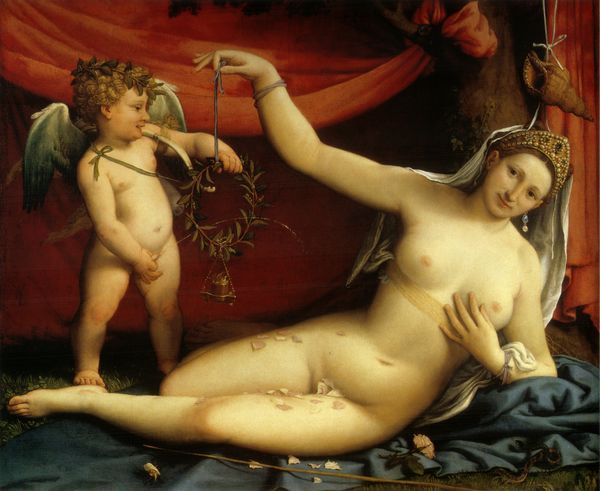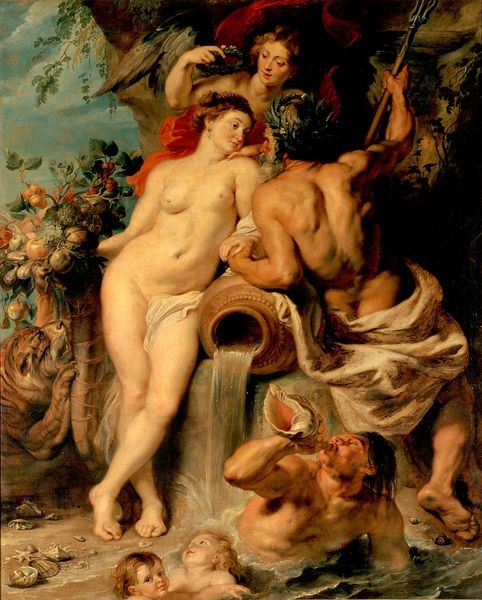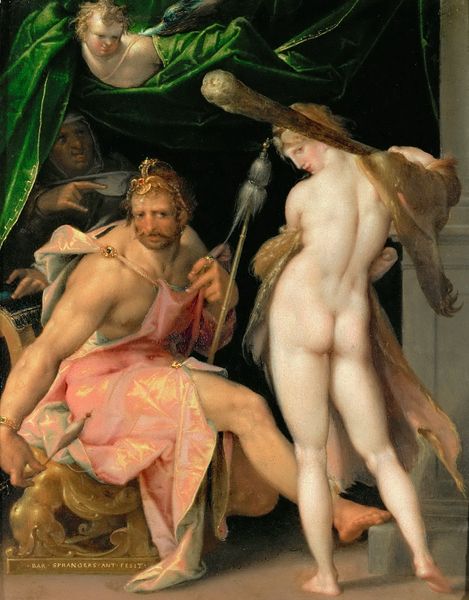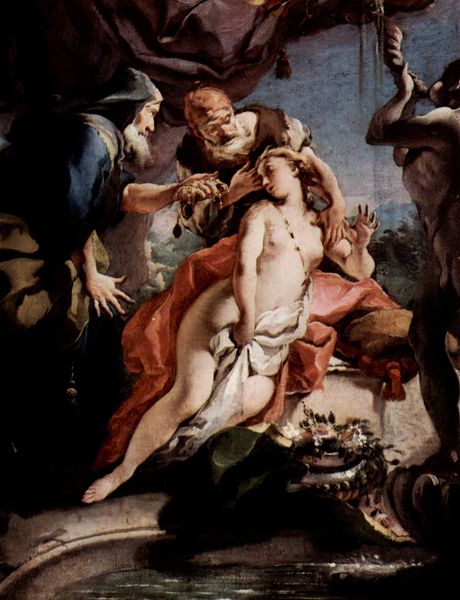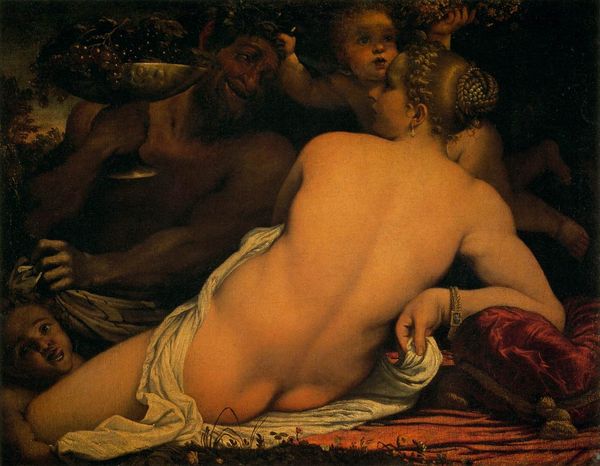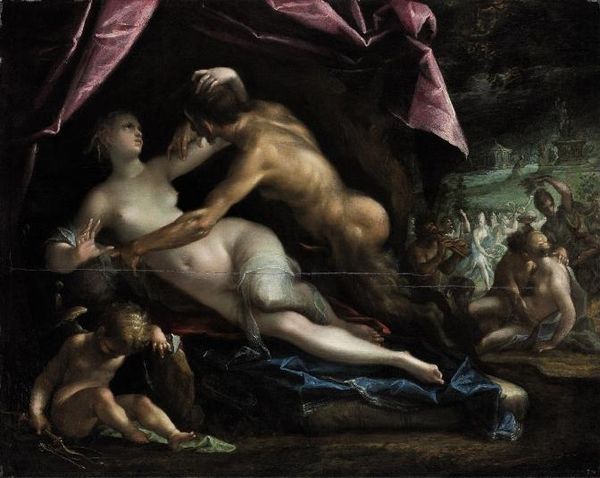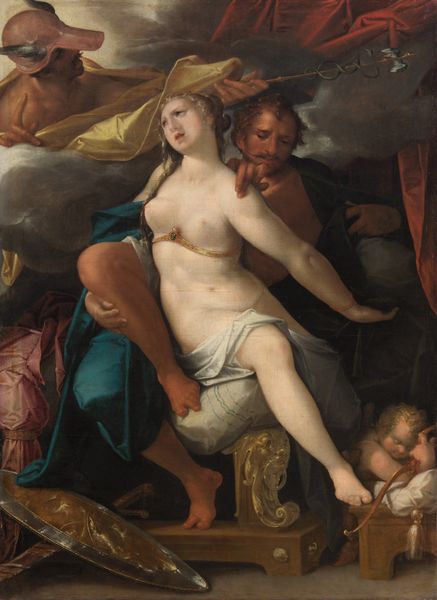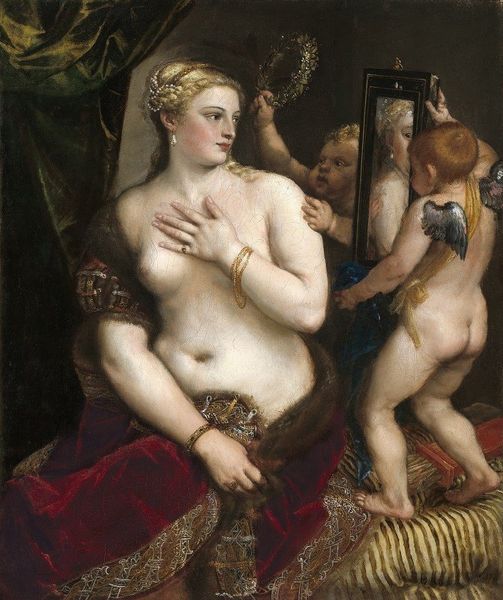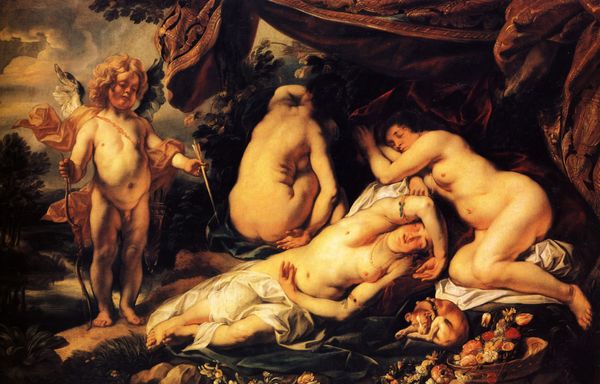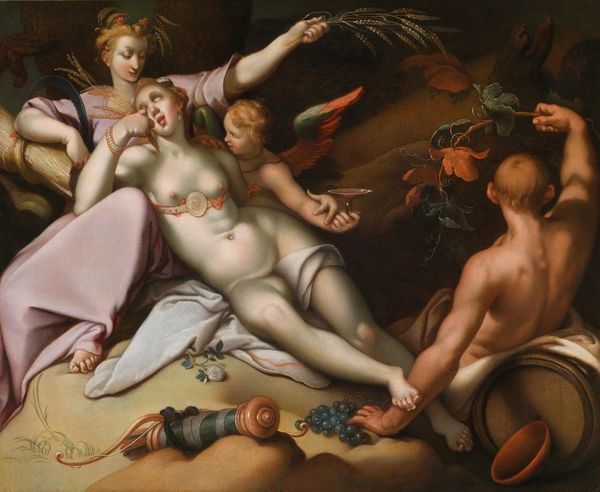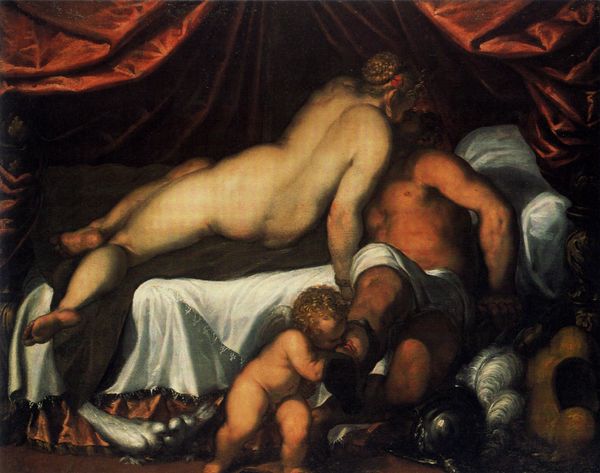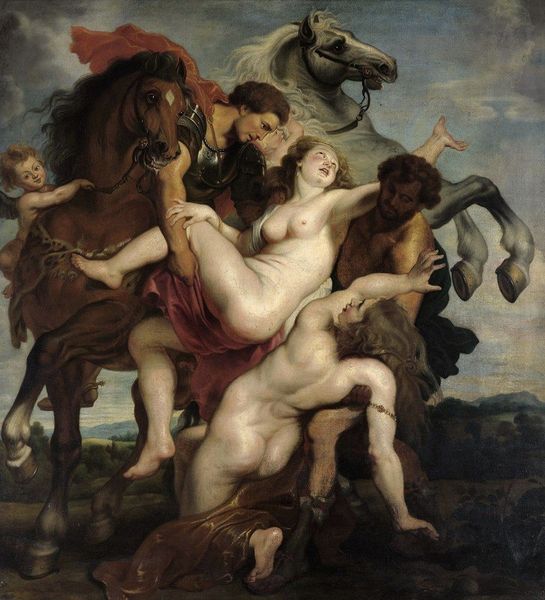
painting, oil-paint
#
venetian-painting
#
allegory
#
narrative-art
#
painting
#
oil-paint
#
mannerism
#
figuration
#
oil painting
#
underpainting
#
mythology
#
painting painterly
#
history-painting
#
nude
#
portrait art
Copyright: Public Domain: Artvee
Editor: Well, this is certainly... intense. The diagonal composition, the dramatic lighting—it throws you right into the heart of the moment. Curator: Indeed. We're looking at Jacopo Tintoretto's "Tarquin and Lucretia," an oil painting dating back to around 1578. It encapsulates the tragic Roman legend. Editor: The dynamism is undeniable. I see Tarquin’s imposing physicality contrasted with Lucretia’s desperate struggle—her pose almost seems to defy the very frame. It speaks to power and resistance but is somewhat erotic at the same time. Curator: The sword and the pearls scattered across the composition can also tell a story. The sword symbolizes not just Tarquin's violent act but also revenge. And the pearls? Editor: Symbols of purity, innocence, now violently disrupted, profaned, mirroring Lucretia's defilement. I can't help but notice the figure falling in the shadows in the lower left corner of the work. That looks a lot like some variation of cupid without the wings, which is definitely meant to indicate erotic love, as we typically think about it today. The fall mirrors the scene's drama, creating an unnerving commentary of its own. Curator: Consider how the underpainting also peeks through, the texture lending a raw emotional quality to the figures' movements and adding energy. Editor: You are so right, it reinforces that feeling of instability that’s also created with the stark tenebrism—shadows that nearly swallow everything—intensifying the emotional resonance. Curator: This particular interpretation of the narrative dives deep into the contrast between virtue and the crude nature of force. This really demonstrates Tintoretto's virtuosity as a narrator. Editor: For me, beyond just the skill in handling oil paint, I also believe it reveals something unsettling about how these power dynamics play out. You cannot ignore how, throughout art history, some things continue to be represented, again, and again, using a common visual vernacular that informs culture. Curator: And from my perspective, the mastery lies in the orchestration of these elements – the dramatic light, dynamic composition, raw texture – creating a cohesive, powerful statement about the inherent tensions of human existence.
Comments
No comments
Be the first to comment and join the conversation on the ultimate creative platform.
